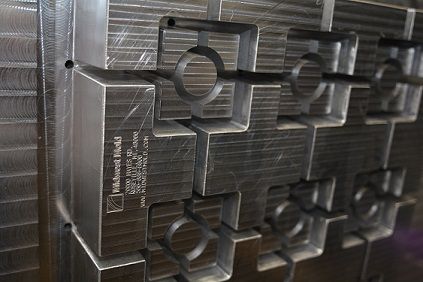Aluminum more than ever has a place in production molds. Aluminum is less expensive than P-20 tool steel – a material of choice for high volume parts – and an aluminum mold can run cycle times 20-30% faster than steel. In today’s automotive economic environment many OEM’s are telling their suppliers to convert to aluminum where feasible.
Choosing the right Aluminum for Production Molds
When compared to P-20 steel,
- Aluminum has four to five times better thermal heat transfer. With better thermal conductivity, the position and number of water lines is less critical, allowing for the placement of additional ejector pins where needed.
- Aluminum has demonstrated productivity improvement of 20 to 30% in cycle time savings.
- Aluminum has outstanding machining and polishing characteristics. With some high strength aluminum alloys, machining ratings are as high as eight times faster than steel.
- Aluminum does not have to be sent out for heat treating or stress relieving. All this is done during the manufacturing process.
- All aluminum alloys are not created equal. For production molds we highly recommend QC-10, a high strength, heat treated wrought aluminum alloy mold material.
MOLD DESIGN:
When designing a production aluminum mold, several factors need to be addressed for a successful mold. Is the resin conducive for aluminum? What is the part geometry of the part to be molded? What is the quantity? What is the desired cycle time? How long does the mold need to last? These factors are very much the same ones designers look at when designing a P-20 mold. With our aluminum tools we will use a support frame which incorporates steel support pillars to create a mold that has all the thermal benefits of aluminum matched with the durability of a steel mold. The use of these support pillars avoids the possibility of over clamping the mold and crushing the parting line. Also aluminum tools can be textured.
Aluminum tools must be treated with a bit more care than steel tools. They can be damaged with excessive clamp pressure, excessive injection pressure or by removing stuck parts with a screw driver or sharp object. There must be a culture in the molding shop that is compatible with aluminum tools. The shops and OEM’s that are using them are reaping the benefits.

